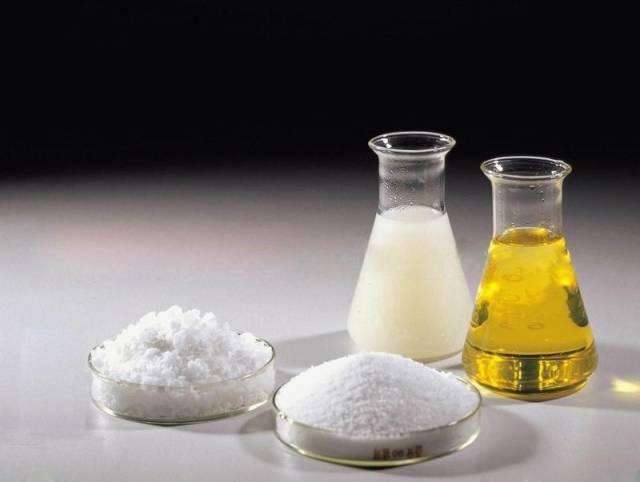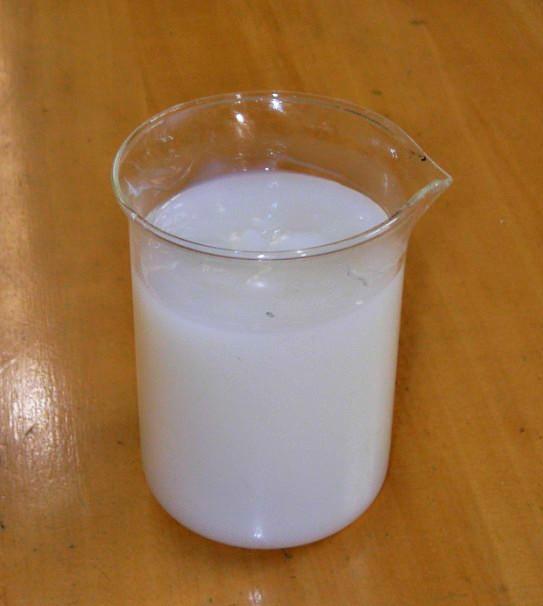Emulsifiers are still important functional ingredients in the food industry. Emulsifiers contain both hydrophilic and hydrophobic parts and can be effective even when added in small amounts. The main function of emulsifier is to form a mesomorphous state with water, enhance or weaken the interaction with protein, form a complex with starch, and promote or inhibit fat crystallization.
Function
1. The role of emulsifier and water
The monoester and water in the emulsifier can have a very complex interaction. The degree of interaction depends on the temperature and the ratio of monoester to water, and also with the fatty acid. Type related. The formed material can exhibit both crystalline and liquid properties at the same time, that is, mesogenicity. The mesomorphic phases of monoglycerides are: lamellar mesophase (lamellar phase), α-gel, cubic phase, hexagonal phase, etc. Monoglyceride is β-crystalline at room temperature and has the most stable structure. The α-crystalline state is the most effective active state of emulsifiers.
2. The role of emulsifier and protein
The emulsifier can form a complex with gluten protein, making the gluten protein molecules larger and forming a strong and dense gluten network, which enhances the mechanical strength of gluten and improves The air holding capacity of the dough increases the volume of the product.
3. The role of emulsifier and fat
The fatty acid group of the emulsifier is similar to the fatty acid group of the oil, so the emulsifier has a controlling effect on the formation, crystal form and precipitation of solid fat crystals. In chocolate, it promotes the crystallization of cocoa butter to become fine and uniform; in frozen foods such as ice cream, high HLB emulsifiers can prevent sugars from crystallizing; and in margarine, low HLB emulsifiers can prevent fats and oils from crystallizing. Crystallization occurs.

4. The role of emulsifier and starch
Emulsifiers can combine with amylose to form a complex, which delays starch recrystallization, that is, starch aging, and keeps the product soft and fresh. The most powerful one is molecularly distilled monoglyceride.
a. Dough mixing stage: Monoglyceride is adsorbed on the surface of starch granules, which can inhibit the expansion of starch granules and prevent the interconnection between starch granules. At this time, the emulsifier cannot enter the inside of the starch granules.
b. Bake in the oven: When the internal temperature of the dough rises to about 50°C, the monoglyceride changes from the β-crystalline state to the α-crystalline state, and then combines with The water together forms a liquid crystalline lamellar dispersed phase. The α-crystalline state is the most effective active state of emulsifiers. When the temperature reaches the gelatinization temperature of starch, the starch granules begin to swell, and the monoglycerides interact with the amylose of the dissolved starch granules and the amylose remaining in the starch granules. The hydrocarbon chains of monoglycerides enter the helical configuration formed by amylose to form a complex. The complex is insoluble in water, preventing amylose from dissolving into starch granules and greatly reducing the amount of free amylose.
Emulsifier application form
Emulsifiers come in different forms such as powder and paste. The physical form of an emulsifier is very important to its function and effect, among which hydrated emulsifiers have the best functionality.
The functions and effects of different forms of emulsifiers will also be different. For example, fully hydrated propylene glycol ester is used in frosting and fillings to reduce air bubbles, while plastic propylene glycol ester has an aeration effect.
Emulsifier processing conditions
The way food products are processed greatly affects the functionality of emulsifiers. Among the most important processing factors are temperature, intensity of stirring or shearing, or the order in which ingredients are added.
In food, some emulsifiers need to be heated to a certain temperature to function. If the processing conditions cannot reach this temperature, the emulsifier needs to be functional before being added to the food. active state. Emulsified ghee and cake oil/emulsified paste have emulsifiers in an active state and can be used under low temperature conditions.

There are also many applications where the processing conditions are higher than this temperature. There is no need to worry about whether the function of the emulsifier is working. However, if the stirring or whipping method is not appropriate, the emulsifier will also cannot function fully. Cake production is a good example of how mixing procedures can greatly affect the performance of emulsifiers. Emulsifiers generally aggregate at the interface between two incompatible phases.� If the emulsifiers cannot aggregate at these interfaces through stirring or whipping, then they will not be able to function. This is also the difference in efficiency between aerators and mixers for cake making.
Food emulsifier formula
The presence or amount of some ingredients in the food formula will greatly affect the function of the emulsifier.
The choice of emulsifier for baked goods also depends on whether the fat is liquid or plastic shortening. Monoglycerides and diglycerides work perfectly well in shortening recipes, and if liquid oils are used, the final volume is less than ideal. In this case it is necessary to add an a-tendency emulsifier.
In food applications, there are also some emulsifiers that exhibit different functions at different amounts. For example, Tween 80 has an aeration effect when added to the food system at an amount of 0.03-0.1%, and has a defoaming effect when added at an amount of 0.005%.
The combination of different emulsifiers has better functions than a single emulsifier.
Costs and regulations
The cost of raw materials and current local regulations are also important considerations when using emulsifiers.

 微信扫一扫打赏
微信扫一扫打赏

